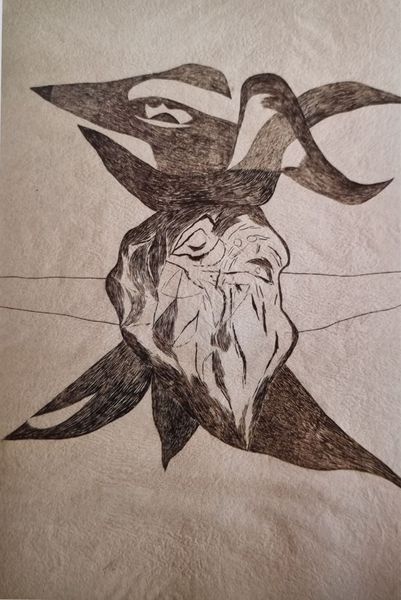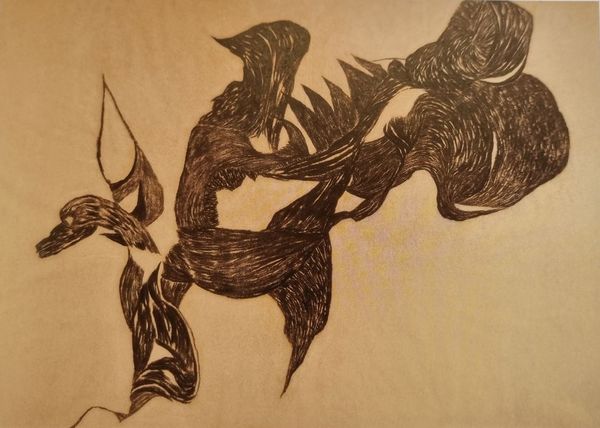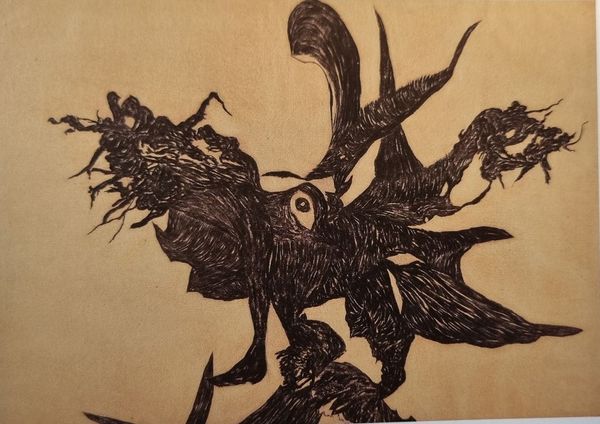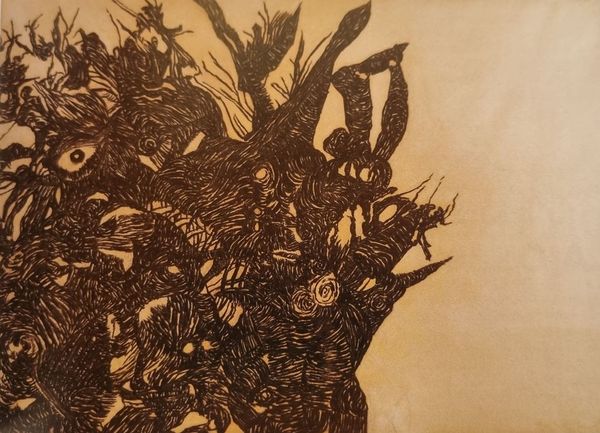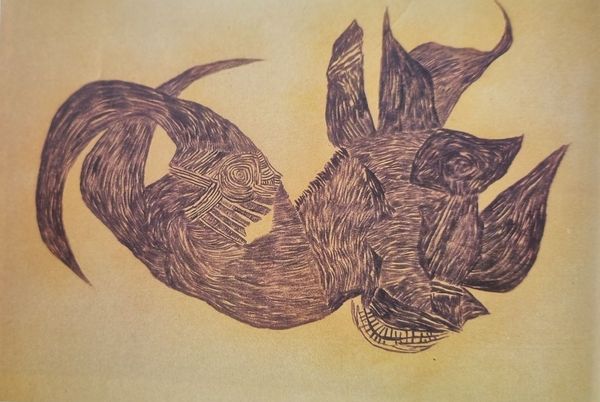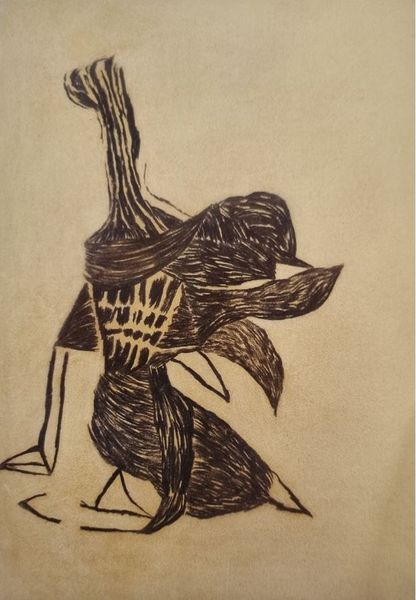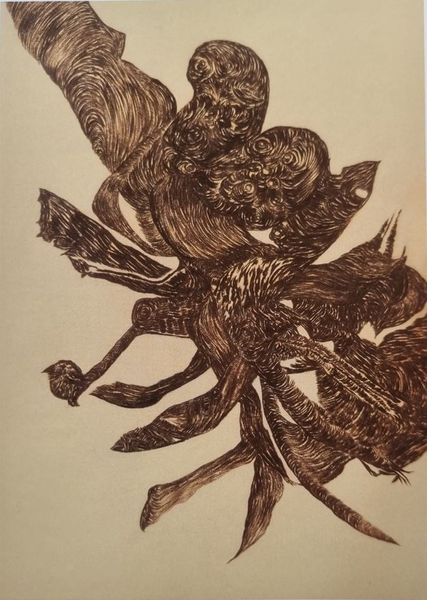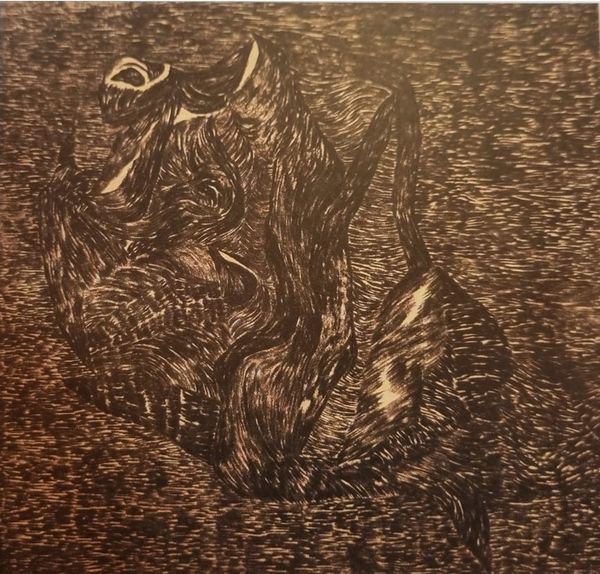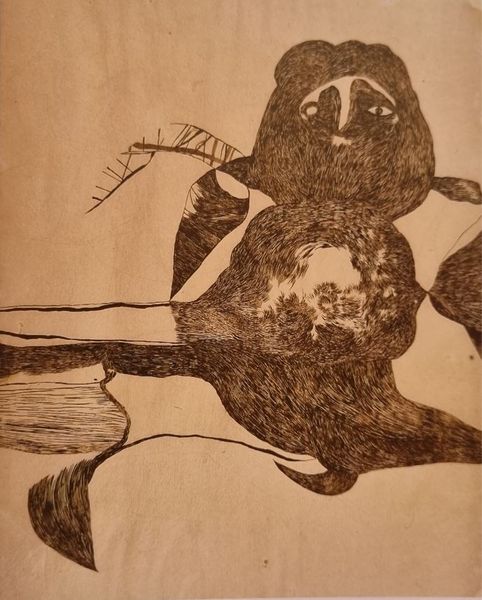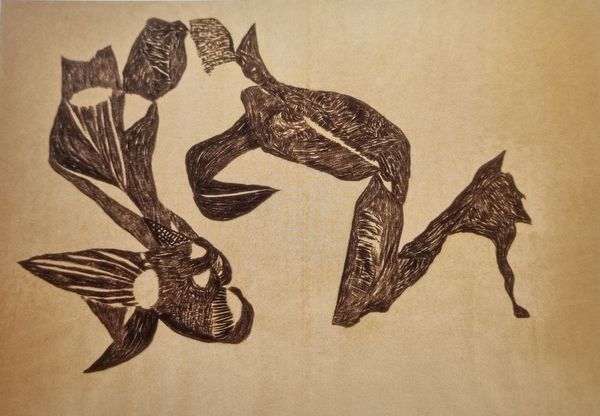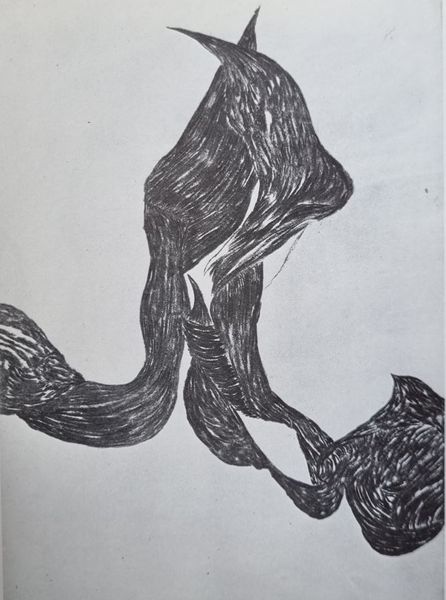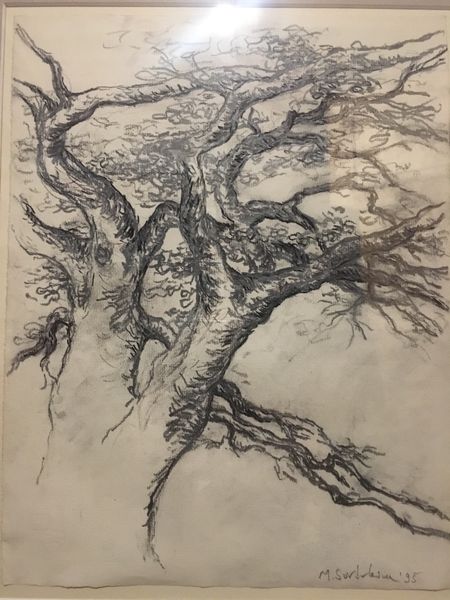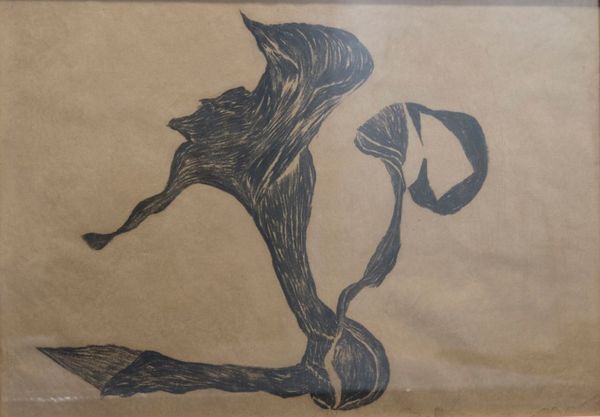
drawing, ink
#
drawing
#
organic
#
charcoal drawing
#
ink
#
abstraction
#
line
Copyright: Public domain
Editor: Vajda Lajos' "Liane," made with ink and charcoal in 1939, has this strangely haunted yet energetic presence. It reminds me of something unearthed rather than grown. What do you see in this piece? Curator: The very material reality of ink and charcoal intertwining here speaks to a primal record, doesn't it? This isn’t simply a depiction of a plant; it's more of a summoning. Look at how the lines build upon each other, creating almost a topographical map. What sort of feelings do those layered lines evoke for you? Editor: A feeling of density and mystery, I guess. Like I'm peering into a forest where the boundary between reality and dream blurs. Curator: Precisely. That sense of layered realities is key. Consider the era; 1939. While the world teetered on the edge of war, artists were delving into inner landscapes, using symbols to express anxieties too profound for direct articulation. Can you sense any of that pre-war tension in the imagery? The way the lines almost claw at the page? Editor: I can see that. It feels less about nature's beauty and more about its latent power and potential for decay. The twisted branches have a morbid feel. Curator: Indeed. Perhaps Vajda is inviting us to contemplate the enduring spirit of nature itself, and our relationship to its cyclical rhythms of life and death, even as chaos reigns. The 'Liane' isn’t just a vine, but perhaps the threads that bind us to something deeper. It becomes a symbol of cultural memory persisting amidst crisis. It shows our cultural fears of displacement, trauma, of being uprooted in our collective psyche. It acts as an eternal question mark, hovering. Editor: It’s interesting how an image of nature can carry so much human meaning. I definitely see it in a new light. Thanks. Curator: And thank you. Your perspective is refreshing. Art, at its best, functions as a cultural mirror reflecting not just what we see, but also who we are, what we feel, what we remember and fear, and who we aspire to become.
Comments
No comments
Be the first to comment and join the conversation on the ultimate creative platform.
